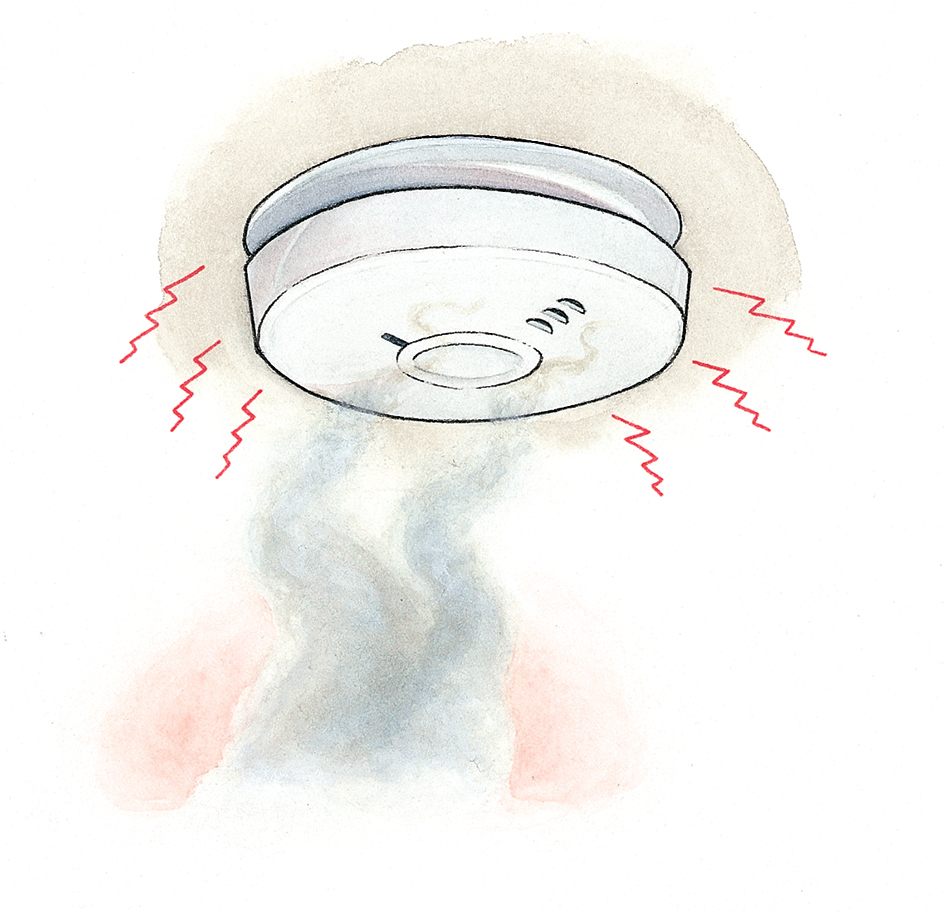Smoke alarm is a device used in homes and other locations, such as aircraft and commercial buildings, to warn people of smoke or a fire. The alarm makes a loud noise within seconds after smoke enters its vents.

Two detection methods are used in smoke alarms: ionization detection and photoelectric detection. An alarm may use one or both methods. Ionization detection uses a tiny radioactive cell to electrically charge molecules of air, creating particles called ions. The ions produce an electric current that flows continuously. Smoke particles become attached to the ions and reduce the flow of the current, setting off the alarm. Photoelectric detection uses a light source that shines into a chamber, plus a light-sensitive device called a photocell. Smoke scatters the light from the source and reflects it onto the photocell. The photocell then triggers the alarm.
Loading the player...Smoke alarm
Smoke alarms operate on household current, battery power, or both. Building codes specify power, location, and installation requirements. Typical locations include in and just outside sleeping areas, and on each level of a home. Smoke alarms must be installed on a ceiling, at least 4 inches (10 centimeters) from the wall, or on a wall, with the top of the device between 4 and 12 inches (10 and 30 centimeters) from the ceiling.
See also Fire department (Fire prevention and fire safety) ; Safety (Safety from fire) .
